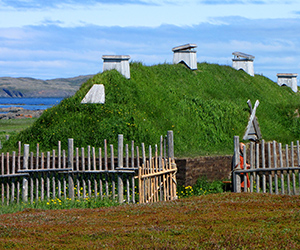CANADA HISTORY
A New France

The return of Champlain to Quebec in 1633 and the reestablishment of French control over the St. Lawrence Valley marked a crucial turning point in the development of New France. With the colony back under French governance, the opportunity arose for the reorganization of its political and economic structures. Central to this restructuring was the resolution of a long-standing dispute between the de Caen brothers, who had previously held the monopoly on the fur trade, and the Company of 100 Associates, which had been granted control of New France by Cardinal Richelieu. This resolution allowed for a fresh start, paving the way for more cohesive governance and economic growth in the colony.
However, by the 1640s, the Company of 100 Associates began to falter. Losses from their fur trading monopoly, exacerbated by conflicts with both Indigenous nations and the British, made it difficult to maintain control over the colony. Faced with financial strain and dwindling profits, the Company of 100 Associates handed over its rights to a local group in Quebec, known as the Company of Habitants in 1645. This transfer of power was significant because it shifted control of New France’s economic engine—the fur trade—to the settlers themselves, rather than being overseen by a distant company in France.
The Company of Habitants, comprised of the colonial elite or "habitants," quickly grew into a powerful force within New France. These individuals, who had long been tied to the fur trade, now assumed a greater role in the economic and political life of the colony. The habitants were not just landholders and fur traders; they were increasingly involved in the administrative and governance structures of New France. Their growing influence began to challenge the centralized control that the French Crown and the Company of 100 Associates had envisioned for the colony.
By 1647, the situation had grown increasingly unstable. Power politics, driven by competing interests within the fur trade and among colonial leaders, led to internal divisions and discontent. The emerging fur trading aristocracy sought more autonomy, while tensions over land, resources, and trade practices further strained relations within the colony. The Crown recognized that New France required more direct oversight and governance to stabilize the situation and ensure that the colony remained a profitable and secure asset for France.
In response, King Louis XIV issued an edict in 1647 that created the Council of Quebec. This council was designed to bring order to the colony’s political landscape and to mediate the growing power struggle between various factions. French Canadian historian Gustave Lanctot described the hierarchy of authority within New France at this time: "At the top stood the King, royal suzerain and absolute legislator. Under him came the Company of New France, feudal owner of the country, granting seignories and collecting fees, appointing officials of justice and paying their salaries. Next stood the governor who, nominated by the company, but appointed by the king, was the colony's highest court of appeal, wielded absolute authority in military and civil regulations, and even in trade and financial matters, in any case of emergency."
This structure placed the Company of New France as the overarching authority, responsible for managing seignorial grants and collecting revenue. However, it was the Governor—appointed by the Crown—who held ultimate authority in matters of military defense, civil regulations, and economic policy in times of crisis. The Company of Habitants, by contrast, retained control over the fur trade monopoly, while the newly created Council of Quebec was composed of elected members from the colony and was charged with regulating commercial policy and public expenditure.
The establishment of the Council of Quebec was a landmark moment in the governance of New France, as it introduced a degree of popular representation that was absent in most European monarchies and many English colonies in the Americas. While the council did not provide full democratic governance, it allowed for the voices of the colony’s leading figures to influence decision-making, particularly in matters of trade and finance. This hybrid system of governance—combining royal authority, corporate interests, and local representation—was unique in the French colonial world and played a crucial role in shaping the future of the colony.
The balance of power between the Crown, the colonial elite, and the fur trade interests allowed New France to navigate the challenges of the mid-17th century. The Council of Quebec provided a means of resolving internal disputes and maintaining order in a colony that was still vulnerable to external threats from the British, the Dutch, and various Indigenous nations. It also laid the groundwork for a more organized and structured society, with clear lines of authority and responsibility that would be crucial in the colony’s continued development.
This system, though not without its flaws, allowed New France to grow in both size and influence. The governance structure ensured that the colony could manage its resources and maintain profitable trade relationships, while the degree of local representation fostered a unique political culture that would influence later developments in Canadian history. The Council of Quebec and the Company of Habitants played pivotal roles in shaping the early political and economic systems that would define New France and, ultimately, contribute to the foundations of modern Canada.
Cite Article : www.canadahistory.com/sections/documents




